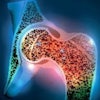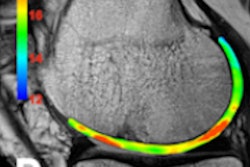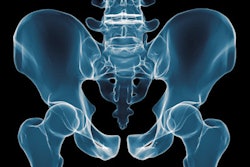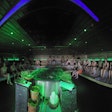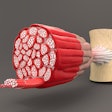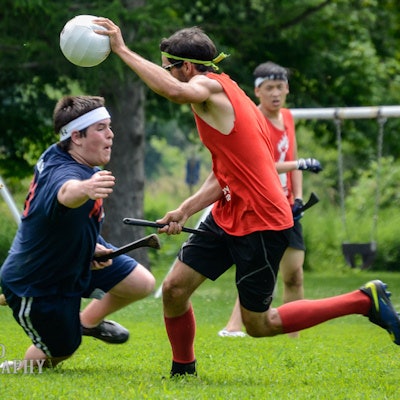
Injuries from the Harry Potter-inspired sport of quidditch are far from make-believe, researchers from Oxford, U.K., have found. Fractures are surprisingly common, and players should consider wearing protective helmets and gloves, they recommended at last week's U.K. Radiological Congress (UKRC).
Quidditch is adapted from the magical sport played on broomsticks in the Harry Potter books written by J.K. Rowling. The U.S. won the first two Quidditch World Cups in 2012 and 2014, but Australia beat the U.S. to claim the 2016 competition, held last July in Frankfurt, Germany. A total of 21 teams took part in last year's World Cup, including sides from Belgium, Brazil, Canada, the Republic of Ireland, Italy, Mexico, South Korea, and the U.K.
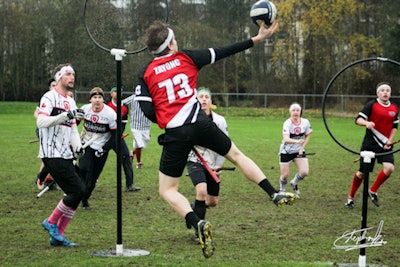 A quidditch team consists of 21 players, with seven on the field at any one time. Photo by Stephan Kim. All images courtesy of Quidditch Canada.
A quidditch team consists of 21 players, with seven on the field at any one time. Photo by Stephan Kim. All images courtesy of Quidditch Canada.Thomas Gardiner and colleagues from the department of radiology at Churchill Hospital, Oxford University Hospitals National Health Service (NHS) Trust, presented the findings of a five-year study of imaging of quidditch injuries at UKRC in Manchester.
"Quidditch is an increasingly popular sport, but no published studies have commented on this type of activity or focused on its injury patterns," they noted. "Qualitative surveys and interviews have shown head and neck injuries, injured collarbones, and injured fingers to be among the most frequent injuries, typically resulting from tackles or falling."
Interest in the sport is particularly strong in Oxford. The Oxford Quidditch Club was started in November 2011, and it won the British Quidditch Cup last year.
Injuries on the field of play
The researchers investigated the type and frequency of injuries associated with this emerging sport between 20 November 2011 and 20 November 2016. They identified 12 injured patients (six men, six women) between the ages of 18 and 32 who presented in Oxford. Their average age was 21.5.
Three patients were investigated for neck injuries, five for upper limb injuries, and four for lower limb injuries. The examinations carried out included 12 appendicular x-rays, one CT, and one MRI scan.
A clavicle fracture, a fifth metacarpal fracture, and a radial head fracture were identified. Also, the MRI knee exam detected an anterior cruciate ligament rupture and medial meniscal tear. None of the patients investigated for neck injuries had a fracture. Two patients had more than one imaging investigation, and four required hospital follow-up.
 Many injuries result from tackles and falls. Photo by Julie Mary.
Many injuries result from tackles and falls. Photo by Julie Mary.A wide spectrum of injuries is associated with quidditch, according to Gardiner. The study showed a predominance of extremity injuries, with 33.3% of those presenting being diagnosed with a fracture or joint instability. Despite concern over cervical spine injuries in 25% of those who presented, there was no evidence of bone injury in these patients.
"Injury prevention strategies should focus on reducing head and neck trauma, perhaps with consideration of helmets to reduce head injuries," he concluded. "Protective gloves may also prove beneficial, as well as education about the proper technique in falling and tackling."
How to play quidditch
In quidditch, teams consist of 21 players, with seven on the field at any one time, and no more than four of the seven can be of the same gender, according to a 2016 report on the BBC website. The team comprises a keeper, who guards three goal hoops, and three chasers who try to throw a ball, called the quaffle, through the opposition hoops, which scores 10 points.
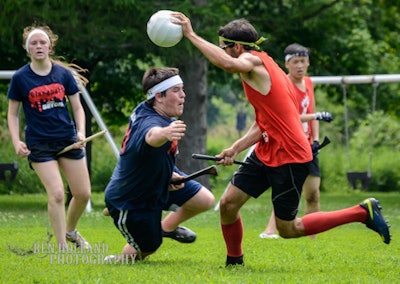 A ball used in quidditch is called the quaffle.
A ball used in quidditch is called the quaffle.There are also two beaters, who throw balls called bludgers at opposition players. If hit, a player must drop any ball they are holding and run to touch one of their own goal hoops before re-entering play.
Finally there is the seeker, whose job is to catch the "snitch," a tennis ball in a sock attached with Velcro to the waistband of a snitch runner. This scores 30 points and ends the game.


